The Technology Alberta newsletter brings weekly highlights from the province’s tech sector directly to your inbox.
Getting to Know Your Customers
Debra Grieg
Technology Alberta board member and entrepreneur Debra Greig—founder of TransforMana, a supportive community assisting CEOs to become more effective and efficient in their daily work by reenforcing critical business practice knowledge and skills—is well-placed to provide her perspective about customer discovery and a customer-centric research process, having begun her career with a 20-year stint in retail.
Celia Nicholls sat down with her for a conversation about:
- how to identify who your customers are, or will be in the future;
- how to understand your target market; and
- how to leverage your research, to action the insights gained from a deeper understanding of your customers and their specific needs.

Identifying your customer
As a new or growing company, what is the importance of knowing your customers?
It’s even more than knowing who your customer is, it’s actually knowing them. There is nothing more important to a business than its customer, and for a startup it’s knowing that first customer. Many entrepreneurs misunderstand completely about how businesses come together. Occasionally, when you have something very obvious or very typical, something that already exists in the marketplace, you can piggyback off of what’s already known about the industry and about the products that the industry makes and sells and what problems its solves. But frequently entrepreneurs are creating something new, some product conceptualised for a group of customers who have not used a product like that before and are unfamiliar with the benefits that they would receive from it. The “build it and they will come” model is a risky one indeed, and although many of the startup accelerators and the variety of workshops and programs that are put on by great organisations in the two big cities in the province talk a lot about minimal viable products, the most effective MVP only comes from deep conversation with customers first.
One of the things that I am in conversation with entrepreneurs about every week, pretty much all week long is how you talk to customers, how you find customers to talk to, and then once you find them what you talk about. There’s a fear that exists in some entrepreneurs around the fact that they are the tech person, they’re the inventor of a product and they don’t see themselves as salespeople. But it really isn’t possible to create a good product that fits a customer group well unless you are the customer and even then you’re a sample size of one, so just because it fits you like a glove doesn’t necessarily mean that it would fit anyone else. The key is in those deep conversations and spending a long time with potential customers in their place of business, watching how they work, understanding them, figuring out what you can do to help. People are desperate to have their problems solved and, to me, entrepreneurs are in the position to do that. It is in the love of your customer, not just the money that they can provide, that true business relationships develop and your company flourishes. Knowing your customer well, helps you serve them well, makes them happy, makes you valuable.
How can established companies benefit from taking a step back to determine who they’re trying to reach with their business?
One of the things about talking to your customers is that it isn’t just about asking them to tell you their problems so that you can solve them, it’s also asking them about your problems. The retail company I came from died, and it died because we lost our customer base, but we could have done better if we’d listened more and talked less. So, ask your customers how you’re doing, and ask them what the value is that they get from you, and from their relationship with you, so you understand from their point of view what they think you’re bringing to them, and also how you can do better. Invite them to help you get better. There are constantly new innovations, new competition, and customers are being pulled away from you at all times, but when you build loyalty and trust like this, it makes your company less vulnerable. Companies that are doing well sometimes lose sight of that because the corporate ego takes over, “we’re doing well, look how fast we’re growing.” Everything’s wonderful until one day it isn’t. It’s about always having your finger on the pulse of how your customers are feeling about you, and having empathy with them.
How do you determine who is and who is not your customer?
At the market-level, can I find five customers, all with the same problem, that have an appetite for a solution right now? These are companies with a “hair-on-fire” problem, not a “yeah that would be nice to have but we’ve got about ten other burning issues that we’re going to spend our cash on first” problem. It might be a need that you’re solving for, but if it isn’t in someone’s top three needs, everybody has limited resources and they’re going to spend their time and their money on solutions to the top three problems their company is currently facing instead. If you’re addressing something that comes further down on the list, they’re not going to buy your product. It is really good to know that upfront before you spend a bunch of money building stuff, and you know that by talking to people and talking to as many people as you can.
As long as your industry is relatively stable, and your market is growing, and you can find customers, you might be on the right track. If you can’t find any customers, then it’s going to be really hard to reach them. If people who start companies in Edmonton then tell me all their customers are in China, I ask why are they not working in China? It is really hard to do business in someone else’s backyard, so finding your first customers locally is really important as well. It doesn’t mean that you won’t have customers all over the world eventually, but it’s cheaper to be able to drive across town to make a sale than to have to fly somewhere. It costs too much money to do that for smaller startup companies.
Finally, it’s about your team as well. It is so much easier to start a company if someone in your company, preferably one of the founders, has your customers in their rolodex. If they were part of that community at one time, and they know all the players in it, then they’re not cold calling, they’re actually calling people they already know and have built-in relationships with. Without that, you’re building your relationship base and your networks from scratch. It’s not like it can’t be done, but it takes a lot longer.
Understanding your target market
What’s the best process by which companies can come to a deeper understanding of the needs and wants of their customer base?
Everybody starts a company with an idea in mind of what the company will do. But before we get too far down the invention path, one of the things we do is start imagining what kind of people would use it. They could be individuals—the actual end user, the consumer—or they could be businesses. So you get a sense of who those people are, and then you go to where those people are and you ask for a few minutes of their time to ask them a couple of questions. The purpose around customer discovery is not about selling your idea to them, but to actually understand what their issues are, what are their top three big problems, how they’re currently solving them, and whether you could actually do something to make their experience ten times better in some way.
If you’ve then got someone who would be willing to pay for that, that’s a potential customer that you could create some really quick and dirty prototype around to show to them and see what they think about it. That prototype isn’t a functioning model, it’s not the minimal viable product even. It could be just a paper-and-pencil thing, it could be a powerpoint presentation, but it’s something to demonstrate to them what your product might be able to do. When Procter & Gamble made Swiffer, they had a piece of wood nailed on to a mop handle that they attached a piece of paper towel to—that was their prototype—and they invited women to come and clean with this mop. So prototypes are very rudimentary, crude demonstrations of your thinking so that you can get some initial feedback.
In talking to your customer, what should you be asking?
Entrepreneurs typically see needs in the marketplace, go to work really hard on creating something with no feedback from an actual customer about whether they’re going in the right direction, and then struggle to find customers for it because it was really built from a novice’s point of view, not from the point of view inside the crucible. So, in my opinion, a lot of mistakes occur around that. Even very big companies who are trying to branch out make some really massive errors in their thinking, so it’s not unique to entrepreneurs or small businesses. An interesting example is Colgate; several years ago they bought a frozen food company and started making frozen food products. They were unable to build any market for that concept because people think Colgate makes toothpaste, it doesn’t make TV dinners.
I can honestly say that one of the greatest gifts that I received from my two-decade long career in retail was the ability to talk to customers, and to develop relationships with them so that when they came in to our store they sought me out because they knew I could help them. Even though in retail people think of the employees who work in stores as salespeople I never saw myself like that. With anybody that came through the doors I only had one question, “what can I do to help you?” You know, when you say “can I help you?” the answer is always “no I’m fine, thank you,” but just changing a couple of words in that sentence makes it a question that sounds more inviting.
Leveraging your research
How do you action the insights gained from a greater understanding of your customers?
It can be overwhelming, but it really is about starting with the mind of a scientist, because you are collecting data, and you’re going to analyse that data, and you’re going to find the best path.
What are some of the missed opportunities you see on both the company and the customer sides that could help in forging a stronger and more mutually beneficial connection between them?
Something that is interesting to me is the level of distrust on both sides. I wrote a blog a couple weeks ago on the topic of “customers – friend or foe?” and the way that we perceive customers as being on the outside instead of being on the inside of our company. They aren’t outsiders, they’re the reason we exist in the first place. If you spend time with them, you know and trust them, and they trust you, and, on both sides, you are more likely to give people that you like and trust the benefit of the doubt, even if they screw up, because you know that, fundamentally, they still have your best interests at heart.
However, the big corporate world has been training us – as customers of theirs for several decades now – by playing us off against each other. For example, we were still receiving a free perk from a bank that we’d been doing business with for thirty years – that we got when we first started with them. We then got a little notice saying that that particular perk was reserved for new customers only, so, although we could still have those services, we’d have to pay for them. But I could get those free services again if I just switched to their competition, so there’s no reward for loyalty. The businesses are teaching us not to trust them in this way, and they treat us dreadfully, and it is this mutual dislike and mutual distrust that makes doing business with people very hard.
One of the things that I see as an opportunity for Technology Alberta is to bring us all into the room—not just our customers and vendors but talent, because they are also vendors of a type—and bring us together in such a way that we can start changing the narrative about what it means to be in business. It’s not about just taking all you can. At the end of the day, as an economic community, we all win or we all lose. When you’re starting out, the way to build momentum for your company is to build trust, to know others in the province, and to help each other. I focus on basically three things when I tell people about how you get customers; how you find great talent to come and work with you; how you find great jobs with companies you’d like to work with: be friendly, be available, and be helpful. If we brought that to the table with every relationship that we forged, and it was reciprocal, I think we would have an easier time starting businesses in this province. There’s lots of work here, there’s lots of work to be done here, but it takes everyone coming together with trust and care. We have to come together and think about what we’re trying to build here together as a community. It’s surprising to me how many of our businesses would be customers of each other’s but they don’t even know about each other. It’s mind-boggling in a way because we’re so close to each other, and yet we’re so far apart. I think we can do better.


